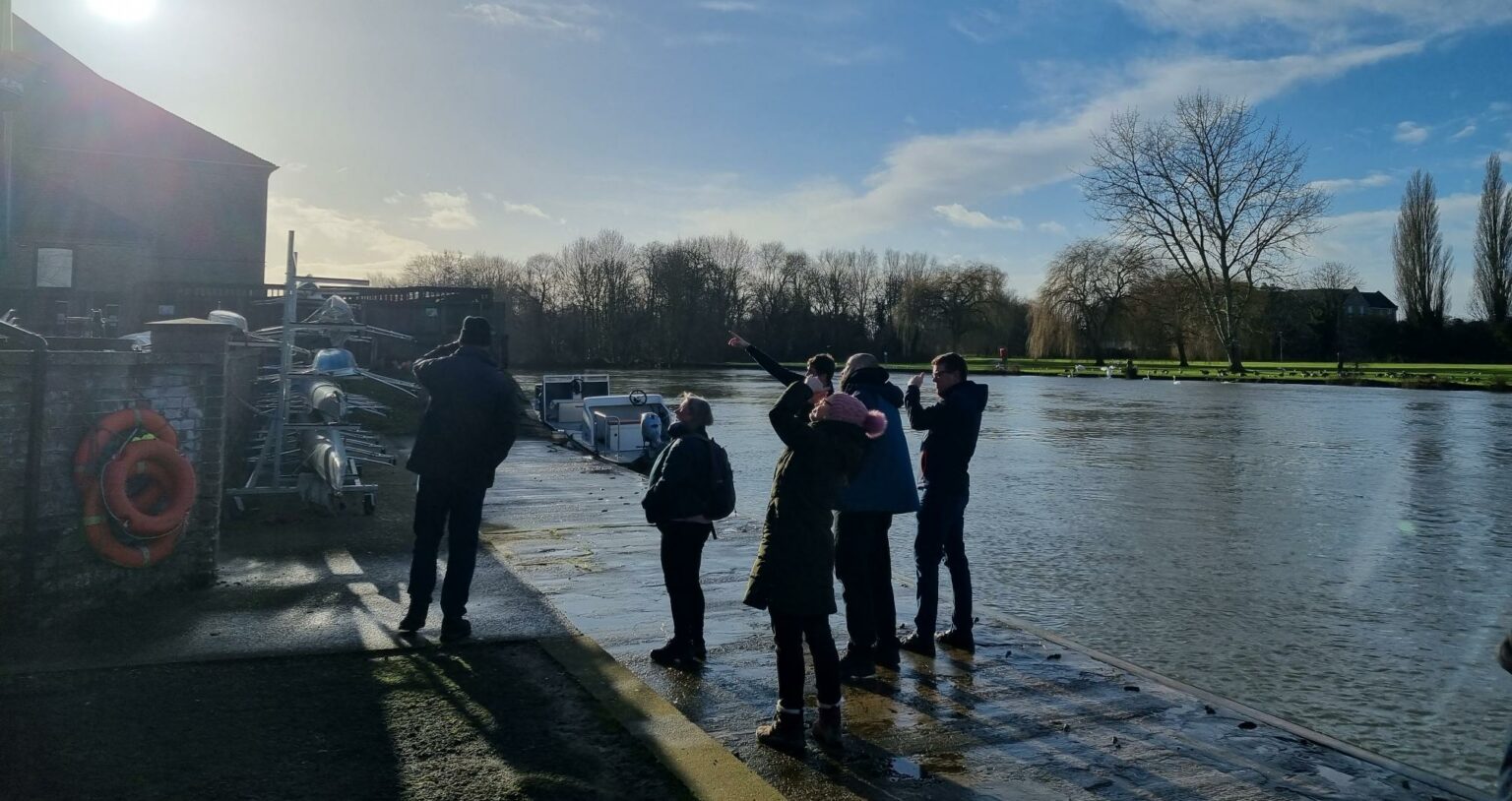
Photo: Connecting Cambridgeshire
UK councils use IoT to get ahead of flooding
23 January 2023
by Sarah Wray
A pilot scheme in Cambridgeshire, England is the latest example of local governments using Internet of Things (IoT) technology to better manage flood risks.
The flood sensors, which are being trialled in vulnerable flood spots across the Huntingdonshire district, will collect real-time river flow and water level data and send alerts to council officers and community flood groups about rises. The pilot will assess whether this approach can trigger early actions, such as planning for road closures and clearing gullies, to reduce the impact of flooding across the county.
The project is joint funded by the Cambridgeshire & Peterborough Combined Authority and Huntingdonshire District Council (HDC) working in collaboration with Cambridgeshire County Council and Connecting Cambridgeshire.
Potential locations across Huntingdonshire have been identified for the trial, with initial sensors being installed in up to six locations in St Neots with known flooding problems.
The Rowing Club was chosen as the first location and will make use of the recently deployed LoRa network in the town to run the sensors. As well as early warning notifications about river levels, this pilot will also provide water temperature updates for club users.
Early detection
Councillor Anna Smith, Deputy Mayor of Cambridgeshire & Peterborough Combined Authority, said: “The Combined Authority provides funding for Connecting Cambridgeshire to deliver trials of innovative technologies. That includes both these smart water level sensors and an expansion of the LoRa network on which they will operate.
“Water management is an increasingly important issue for our region and the Combined Authority is working with communities to develop a better grasp of flood risks across Cambridgeshire. Forewarned is forearmed and these sensors can notify community flood groups so that they can respond more quickly to manage the risks and reduce danger.
“This pilot will ultimately benefit the whole area. Trialling smart sensing technology will gather sharper and more timely data on water flow and rising levels. That means that threats can be detected earlier, residents and businesses warned, and actions taken to help keep them safe.”
The sensors are being installed by Cambridgeshire company cThings. The alerts will be separate from the existing flood warning messages from the Environment Agency.
Data from the trial will be used to evaluate the potential to develop further flood risk schemes across Cambridgeshire and Peterborough.
It is hoped the pilot project will also provide a template to allow more community flood groups to apply to self-fund sensors.
Growing need
Other councils are also trialling IoT to better manage flood risks.
Since 1998, the UK has seen six of the ten wettest years on record. According to the Environment Agency, at least one in six people in England are at risk from flooding from rivers and the sea, with many more at risk from surface water flooding.
Councils including Richmond and Sutton installed flood sensors as part of the South London Partnership’s InnOvaTe Project.
Richmond Council has deployed sensors in 12 gullies across Richmond upon Thames, to allow council officers to monitor rising water levels and alert the borough’s drainage contractors to respond quickly to any surface water flooding.
The project also aims to generate long-term insights to help the council understand and predict the impact of flooding on the drainage system.
Councillor Julia Neden-Watts, Chair of Richmond’s Environment, Sustainability, Culture and Sport Committee, said in November: “The reality is that climate change is making heavy rainfall and flash flooding more frequent. While in most instances any surface flooding usually recedes within a couple of hours, as these weather events become more frequent, the pressure on our drainage systems is going to increase.
“Using technology like this, we can get a better view of how the system is responding to heavy water flow and ensure officers can identify and attend to any serious issues quickly.”
The council reported that during a period of heavy rain on November 2 and 3 last year, the sensors issued five flood warnings and recorded four flooding events, with two locations recorded as not completely returning to pre-flood water levels.







